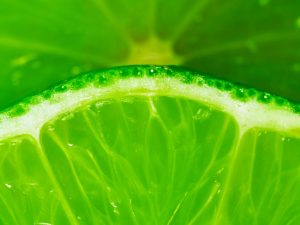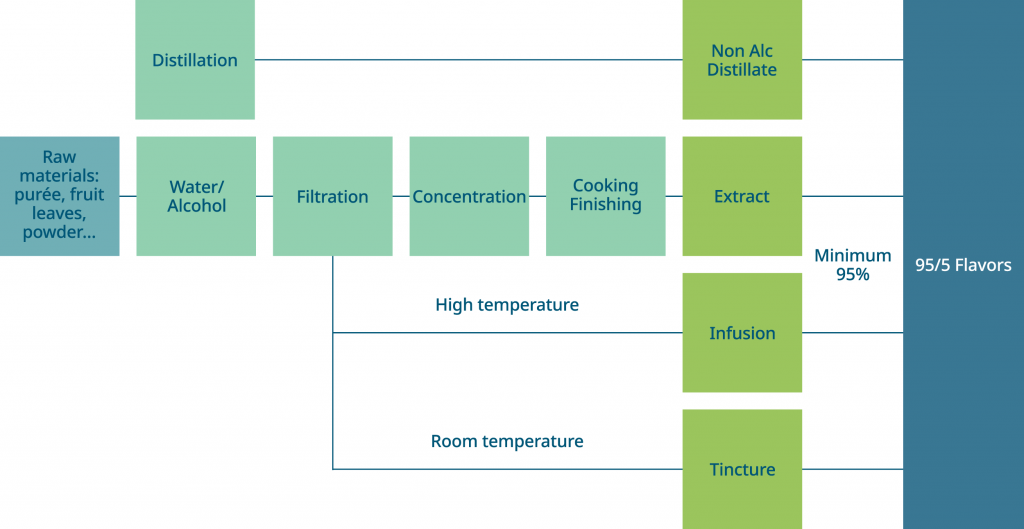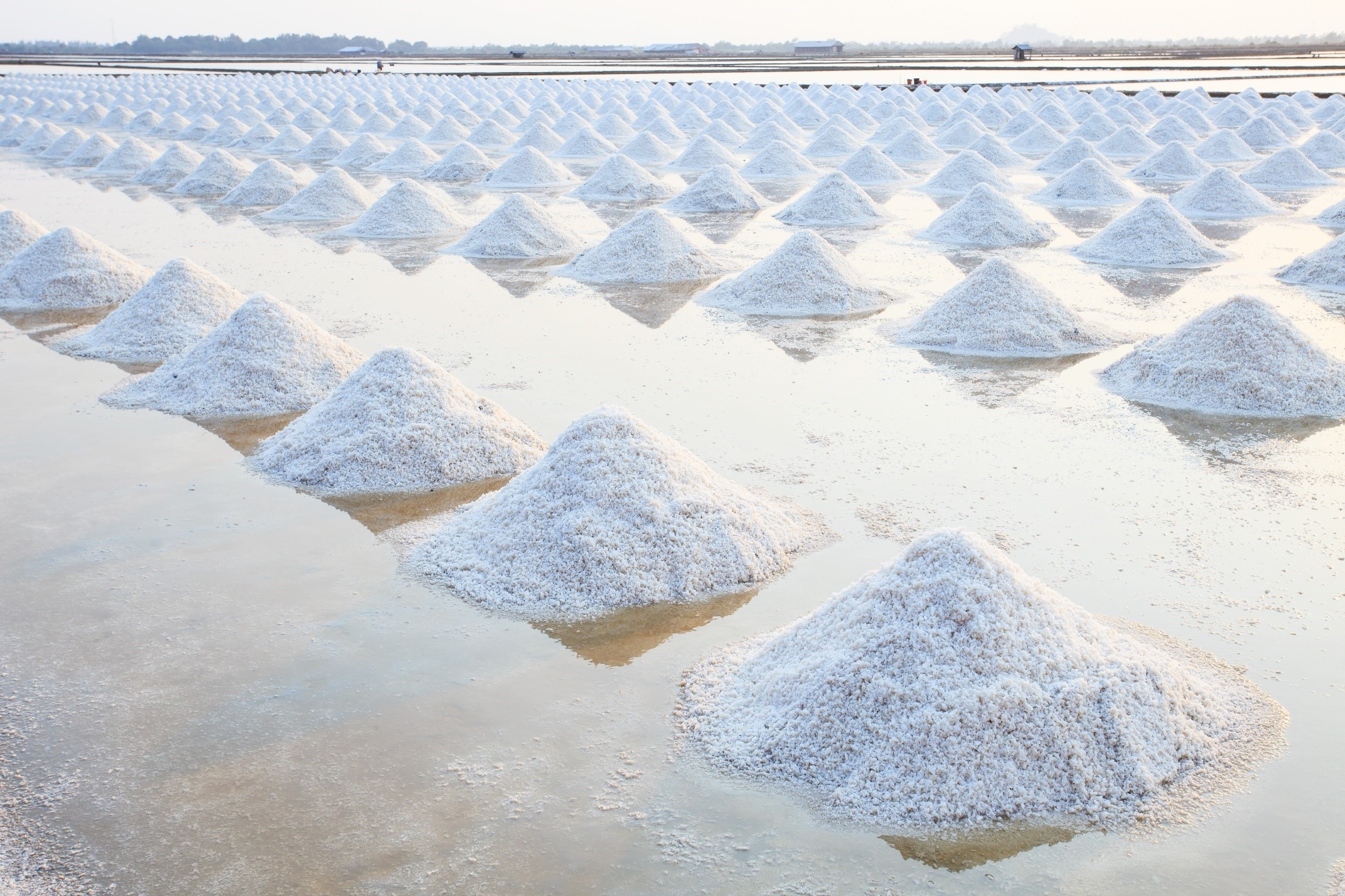As of January 1st, 2022, upcoming regulations will restrict the use of natural flavourings in organic products in the European Union. This change in legislation has impacted the organic product industry. The legislation will only permit flavourings that meet certain criteria to be used in organic products. Businesses will now need to reformulate the flavourings in organic products to comply with this legislation, and this is easier said than done. The legislation changes may leave you wondering “what are natural flavours?” or “what is the difference between a natural flavouring and an extract?”.
This article will look at how extracts are made, the requirements for flavourings in organic food products, and the various factors to consider when using these flavourings in application.
What are natural flavourings? What flavourings will be suitable for organic products?
The new organic regulation (Regulation (EU) 2018/848) offers 2 options regarding the use of flavourings in organic foods:
1a. Organic Suitable Flavourings
1b. Organic Certified Flavourings
2. Extracts (organic certified or not)

‘Natural Flavourings’ will no longer broadly be permitted in organic products, With the new Organic Regulation, only flavourings which are labelled as “Natural <X> Flavouring” (e.g. Natural Lime Flavouring) are permitted to be used in organic products. Within a natural ‘X’ flavouring, a minimum of 95% of the flavouring component in the flavouring must be sourced from the ingredient named in the flavouring, and the flavour source of the material must be easily recognised. For example, with a natural lime flavouring, a minimum of 95% of the flavouring component must be derived from lime and the flavour perception of lime needs to be easily recognised. These flavours are known to be 95/5 flavours.
Since extracts are considered suitable for organic products under the new Organic Regulation, let’s review what an extract is.
What is an extract?
An extract is obtained from a material using a solvent by means defined by the Directive 2009/32/CE or by the less common more traditional press processes.
There are four main methods used to extract flavourings from source material:
Tincture: Raw materials such as leaves, roots, seeds, and flowers are combined with a blend of ethanol and water at room temperature. The solids and liquids are separated, and the remaining liquid is a tincture.
Infusion: Like the tincture process, but instead the raw materials are combined with a blend of ethanol and water under heat. After heating, the solids and liquids are separated, and the remaining liquid is an infusion.
Distillates: Raw materials are combined with a blend of ethanol and water at room temperature and through a distillation process the liquid is fractionated. This liquid is known as the distillate.
Extracts: Raw materials are often combined with a blend of ethanol and water under heat. After heating, the solids and liquids are separated. The solids or “crude” is concentrated and the liquid is re-used for another run. This liquid is the extract. In application (i.e. in a food or beverage) it is usually supported by a carrier such as glycerine or propylene glycol.
What flavouring source is best for different products?
There are many factors to consider when choosing the flavouring source for your product, such as:
- The raw material source, for example seeds and roots are less fragile than flowers or fruits and can therefore withstand harsher extraction processes.
- The final product and the process to make it. Such as a final product that undergoes a heat treatment step during the production.
- Cultural requirements, for instance halal products do not use ethanol as a solvent.
- The type of flavour profile desired. For example, a fresh top note versus a caramel, cooked lasting flavour.

Different methods of processing raw materials produce different types of flavour extracts. These types of extracts are processed differently but can still produce 95/5 flavours appropriate for organic products.
As mentioned earlier, according to the legislation the flavouring source must be easily recognised (e.g. lime flavouring should taste like lime). This is critical to get correct, therefore it is important to consult a flavourist team supported by sensory analysis.
Some natural flavouring sources are more delicate than others or contain less volatiles. In some cases, they are very difficult to extract or can become partially destroyed during the extraction process. Extracts in general can have less intense flavour at low application levels. All of these conditions can result in a need for high application levels.
How can the intensity of extracts be improved?
From around 3000 years BC, method and extraction processes are improving to target the best extract. But what is regarded as the best extract? It is an extract with a lot of top notes. It is fresh and authentic. A high-quality extract can make you feel like you’re tasting the real thing, like biting into a wild strawberry foraged in a forest.
However, every extraction process gives a different result in terms of taste, volatiles, and intensity. For example, water will extract more sugars than alcohol, but alcohol will be more efficient to capture organic volatiles. Therefore, usually a blend of solvents in different ratios are applied to create the desired balance. The intensity of an extract usually depends on the concentration of the flavouring source in the final product quantity. For example, black tea extracts can range in intensity from 1 to 800 times.

An experienced analytical team is crucial to support the development of extracts and flavourings. They investigate each stage of the process and analyse the quality of the final extract. This ensures the correct level of concentration is selected for the application. For instance, vanilla extracts must contain a minimum % of vanillin to be legally defined as a vanilla extract, and authorities use analytical methods to identify adulteration of this premium product. The type of analysis required to determine this is also specific, and conventional analytical techniques such as gas chromatography are unable to discriminate between synthetic and natural molecules, therefore isotopic analysis is required using a mass spectrometer.
Choosing the right natural ‘x’ flavouring
This requires a team effort. A combination of experienced flavourists, efficient extraction processes, analytical scientists, and an application technologist that is knowledgeable on the specific food process and its interaction with the flavourings are all key to produce a great tasting product.

 Nicolas has over 15 years of expertise in development and application of flavours into products like baked goods, sweets, and pharmaceuticals. He completed a bachelor's degree in flavour science from the University of Montpellier II. He is passionate about nature and lives in an eco house in a forest with his wife.
Nicolas has over 15 years of expertise in development and application of flavours into products like baked goods, sweets, and pharmaceuticals. He completed a bachelor's degree in flavour science from the University of Montpellier II. He is passionate about nature and lives in an eco house in a forest with his wife. 

